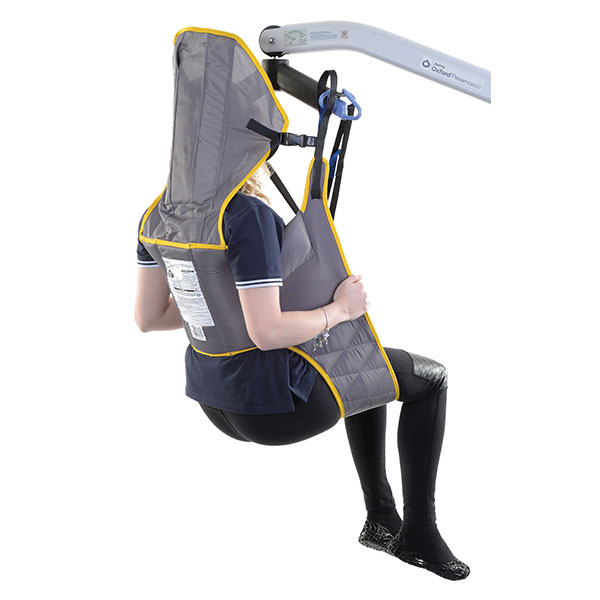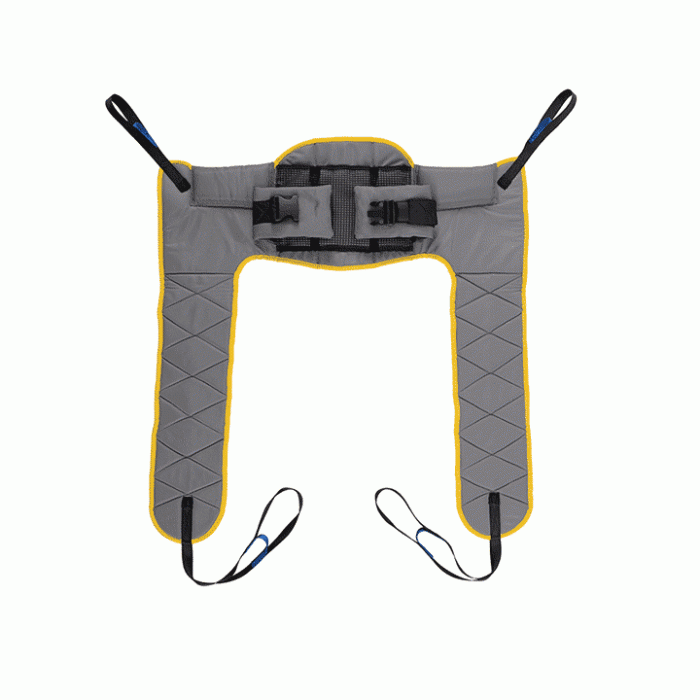How to Increase the Lifespan of Your Sling
15 Minute Read
Asset Management | Buying Guides | Care Homes | Compliance | Healthcare Equipment | How To | Lifecycle Replacement | LOLER | Maintenance Tips | Medaco | Mobile Hoists | Patient Handling Equipment | Patient Slings | Product Comparisons | SEND Schools | Service |
As patient handling equipment experts, we are often asked about how to ensure you are getting the most out of your equipment. Slings are an essential piece of equipment used in the safe transfer of service users and experience high usage across care environments. Slings, just as any other item of patient handling equipment, require special care to ensure you and your service user get the most from them. In this article, we will discuss what causes wear and tear on slings, the importance of adhering to the manufacturers guidance for your slings’ care, and how you can take steps to increase the lifespan of your sling.
Wear and Tear
Patient handling slings are made to be durable and are comprised of strong fabric, velcro and can include metal and/plastic fastenings. The condition of slings just as any other patient handling equipment will deteriorate over time. Some key factors of the wear and tear of slings are the environment they are used in, the way they are cared for and the manner in which they are washed.
Organic Matter and Chemicals Can Affect the Fabric Over Time
Slings are used in a variety of environments that can have effects on the sling fabric itself. When slings are used to help facilitate personal care, they are prone to frequent soiling, and require more washing and decontamination processes. The organic matter deposits that can occur during soiling will deteriorate the fabric over time, whilst the frequency of washing required to remove this soiling from the sling can also contribute to the fabric wearing much quicker.

Furthermore, slings are key components to help facilitate bathing and other personal care and can be used in therapy settings and swimming pools. The chemicals that are present in these environments can also contribute to the degradation of the sling fabric over time.
When specifying a sling for your service user, it is important to consider which fabric is best suited for the environment it will be used in.
Our Medaco article: What are the Different Types of Slings for Hoists? Helps you to learn more about specifying the right sling for your hoist.
Overloading the Weight Capacity on Your Sling
Slings come in varying styles, capacity and sizes. Every sling will come with a specified weight capacity and it is vitally important you and your care staff abide by the weight parameters. Overloading your sling can create unnecessary and unseen stresses which are likely to cause small fractures on the keyholes or loops that are often undetectable by the human eye. Overloading your sling beyond its weight capacity can in turn subject your service user to safety risks.
Fraying Velcro
A common fault we see during sling inspections is the fraying of the velcro material present on the sling. The velcro fabric is relied upon to safely fasten the service user into the sling, and when the material loses its strength, the sling can no longer be used. We’ll discuss further below how velcro fraying can be best prevented.
Check out our guide to 6 Quick & Easy Patient Sling Checks Before Use article with a free downloadable checklist.
Sling Labels and LOLER
Every sling on the market will be fitted with the safety-critical feature of the manufacturer’s label attached to it. During a LOLER inspection, the engineer will specifically note the legibility of the information provided on the label. The sling label will consist of three main pieces of vital information that must be easily read in order for your sling to pass its inspection. Many care facilities are losing a great amount of slings when their labels are faded; a faded label means a failed LOLER and condemnation of the sling.
1. The Serial Number on the Sling
The serial number will be unique to the sling itself and is an integral part of being able to report on the status of the sling. Without being able to read this number, the sling will not pass its inspection.
2. Size and Weight Bearing Ability
You must be able to properly read the sling size and its weight bearing range. Without being able to read this, the facility can risk overloading the sling and putting their service user in danger.
3. The Recommended Washing Temperature
The manufacturer’s recommendation for washing instructions, must be clearly visible on the sling label to ensure you are caring for the sling properly and washing it to a temperature that will preserve the fabric’s integrity.

Prevent Sling Label From Fading and Failing the LOLER
There are ways you can help to prevent your sling label from fading. Firstly, it is important to always follow the manufacturer’s recommended temperature. You can also purchase a special bag to place your sling into before putting it through a washing cycle to help protect it in the machine. Preferably you should always choose to purchase a sling that has woven or embroidered labels, rather than printed labels. Woven labels keep their safety-critical features legible far longer than printed labels, and often cost the same price as their printed-label counterparts.
How to Extend the Life of Your Sling
When aiming to extend the lifespan of your sling, it is important to have regular cleaning practices in place, and follow the recommended care instructions. Again, always follow the general washing temperature requirements according to the sling’s label. Before putting your slings through the wash, it is best practice to fasten the velcro components together. Fastening the velcro together helps to prevent the velcro itself from fraying or attaching to other fabrics in the wash which helps to keep the grip of your velcro strong. Another thing to note, subjecting Velcro to heat can also reduce the sticking ability, since high heat can break down the fibres over time.
Slings can easily get caught and ripped when not properly stored. When storing your sling, it is important to correctly store it by folding and tidying it away. Doing so will help prevent it from getting dirty and from it getting caught on surfaces that can cause damage. Again, with a Velcro fastening always close it before storing the sling to prevent it catching and ripping the other fabric.

Handy Tip:
When you know your LOLER inspection visit is imminent it may be a good idea to ask your staff to briefly check through the slings and put to one side any they think are badly frayed or have faded labels that are likely to get condemned.
This will help mitigate any unforeseen surprises if the engineer has to condemn some slings and you find yourself needing to replace a number of them quickly.
Here at Medaco, we are specialists in supplying the best quality hoisting equipment on the market. The slings we provide for our customers come with woven labels as standard which help to save costs on equipment replacement and increases your facility’s compliance. For further information on slings get in touch with Medaco today. Our staff are on hand and happy to help with your patient handling equipment needs.





